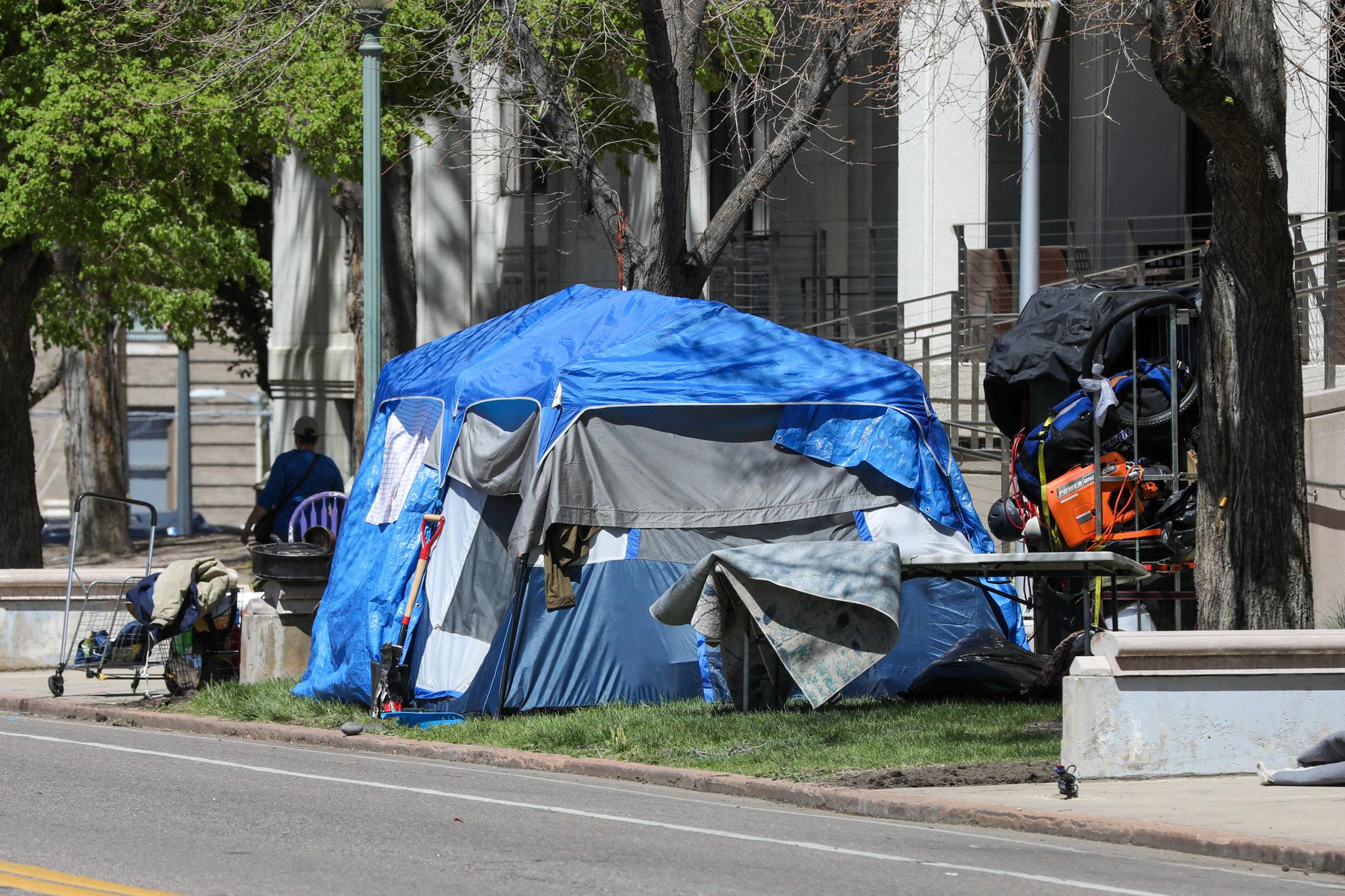
By Jennifer Brown, The Colorado Sun
When people who had been homeless for years moved off the Denver streets and into apartments, they were far less likely to end up in hospital emergency rooms or get locked up in jail.
But they still died at the same rate as those who lived outside.
That’s the grim finding from a new study of Denver’s social impact bond program, which sends outreach workers to find the highest users of taxpayer-funded services including hospitals, detox centers and the jail. Hundreds of people who were chronically homeless have been housed through the program, which began seven years ago.
Previous research showed that the first 250 participants had cost the government a total of $7.3 million per year when they lived outside and in shelters and cycled through the health care and criminal justice systems. After they were housed, researchers found a 40 percent reduction in arrests, a 30 percent reduction in jail stays, a 65 percent decrease in detox services and a 40 percent drop in emergency department visits.
The reductions made up for half of the cost of the program, which was started with $8.6 million from eight private investors as well as local housing resources.
But as those researchers, from the Urban Institute based in Washington, D.C., worked on the previous study, they noticed high levels of mortality among those who were living in supportive housing, which comes not only with rent assistance but also mental health and addiction treatment.
A second study confirmed it: the death rate among those in apartments was the same as those living outside.
The institute looked at mortality data for 532 people who had moved into supportive housing from 2016-19, then compared that to 529 people who were homeless and receiving community services through nonprofit and governmental organizations.
About 10 percent of the housed group — 53 people — had died, a number that researchers called “extremely tragic.” Meanwhile, 9 perecnt of those who were still homeless had died. This is despite the fact that program participants had a 155 percent increase in office-based medical visits.
The conclusion was that a few years in supportive housing was not enough to reverse the long-term health effects and stress of being homeless, which often include mental health problems and addiction.
“We just wanted to dig deeper into that number. It’s such a tragic number,” said Sarah Gillespie, the Urban Institute’s associate vice president of metropolitan housing and communities policy. “People were entering the program with very significant health challenges.”
Not one person who was housed died of exposure, while seven people in the homeless group died of exposure, a cause of death often linked to not having shelter during extreme hot or cold temperatures. It was of some comfort to discover that people who were housed are at least not freezing to death, Gillespie said.
“Dying inside with access to services is a lot different, as opposed to dying on the street,” she said.
The other causes of death for those in both groups varied. Drug overdoses accounted for 2 percent of deaths, while injuries, liver disease, circulatory disease and alcohol use disorder each made up 1 percent of deaths. Smaller fractions of the groups died of homicide, cancer, COVID, diabetes and alcohol overdose.
The average life expectancy for someone who is chronically homeless is 54 years old, according to the Colorado Coalition for the Homeless.
The death rate of those housed was so high, researchers concluded, because the program is targeted toward people who have the highest chances of dying on the street. The Colorado Coalition for the Homeless, the Mental Health Center of Denver and other groups create lists of people who take frequent ambulance rides and regularly spend nights in the hospital and jail. Then outreach workers visit encampments and shelters trying to find them.
Once found, they are offered a spot in the program, which is funded by government and private investments.
Denver expanded the program in 2018, and in 2021, the U.S. Treasury Department offered the city $6 million in new federal funding if the program can show a drop in Medicare and Medicaid billings during the next several years. If the city can keep 125 new people housed, it will not have to pay back the money.
Previous research found that 86 percent of people in the program were still housed after one year, and 77 percent were still housed after three years.
The program has provided a wealth of data and potential research on the costs of homelessness. “We’ve been able to shine light on common myths,” Gillespie said. “One of those is that people want to be homeless and they are choosing that.”
Out of hundreds offered housing, only a few have said no. It’s also a rare look at how intervention programs can help those who didn’t ask for help.
“The project succeeded in targeting the most vulnerable residents — not those who walked in the door and asked for it,” she said.








